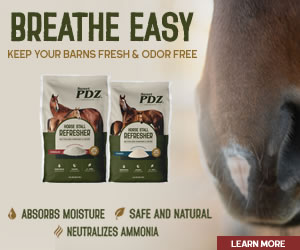Rotational grazing. Perhaps this is an unfamiliar term to horse owners and caregivers. Maybe you have heard of the term, but thought it only pertained to cattle and other livestock. However, rotational grazing is pertinent in the equine world, no matter how big or small your pasture is.
Rotational grazing is the process of dividing a larger pasture into two or more smaller paddocks and moving horses from paddock to paddock at regular intervals. When used correctly, using this pasture management practice of recurring periods of grazing and rest promotes healthier forage for your horses.
According to Kyla Szemplinski, MS, of the UT-TSU Shelby County Extension Office, “Pastures not only provide a great source of forage for a horse’s diet, but also enrichment to help ease your horse’s mentality, reduce vices, and give additional exercise to keep your horses in shape.” However, if you have limited property with a smaller pasture, you may quickly fall victim to overgrazing. “Overgrazing occurs when horse owners house their pastures with more horses per acre than a pasture can handle; on average, one horse needs about two acres of pasture to be sufficient in getting necessary forage in its diet,” Chris Cooper, PhD, and Agent Szemplinski advise.
If your pastures are overgrazed, rotational grazing may be the solution to bringing back grass in your pasture this summer. It can also be beneficial for those with larger pastures as well. According to Dr. Cooper and Agent Szemplinski, “Rotational grazing has a multitude of benefits that help increase the following in pasture grasses:
1. Yield
2. Persistence of desirable species
3. Forage quality
4. Yield stability
5. Uniformity of manure distribution
6. Stocking rate
7. Profitability
In addition to increasing these positive aspects, rotational grazing decreases the following negative aspects:”
1. Weeds
2. Erosion
3. Hay feeding
4. Maintenance fertilization
5. Cost of production
To implement rotational grazing, divide your current pasture into smaller paddock areas. This does not have to turn into a complicated, time-consuming, permanent fencing job; it can be as simple as using electric tape or poly wire. For smaller pastures, you may only have two or three paddocks; larger pastures may be subdivided into numerous sections. Paddocks do not need to be the same size, but should be similar in forage productivity. Once your pasture is split into smaller sections, you can now concentrate your horses on a smaller area for a few days, then move them to another paddock in sequence.
There are several types of rotational grazing, with the most common being slow rotational grazing and planned rotational grazing. With slow rotational grazing, two or more paddocks are utilized, and horses are moved from every two weeks to every few months. This is most beneficial for equine owners and caregivers with plenty of acreage and larger pastures. Planned rotational grazing involves strategic moves every three to ten days. This type of rotational grazing is best suited for those with smaller paddocks and pastures, as it promotes rest and recovery of overgrazed pastures. More intensive rotational grazing systems can be implemented for those with larger equine herds. Whichever systemic grazing strategy you choose, rotation is key.
Good rotation through the pasture means happier horses. Not only will your horses have more lush, thick grass to provide healthier forage, but this systemic grazing also provides a recovery period while your horses are on other paddocks. This rest period allows pasture plants to grow with more vigor and prevents overgrazing. Equines prefer young, immature plants and will mow pastures down to the bare ground in an attempt to find them. Rotational grazing prevents this scalping of the land. Another benefit of rotational grazing is the reduction of soil erosion.
Drawbacks of rotational grazing include the need for more fencing of some sort and more time spent rotating equines throughout the paddocks. Thought must also be given to providing shade, water, and shelter to your horses in each of the smaller paddocks.
“Another beneficial tool all rotational grazing systems should implement are dry/sacrifice lots,” Agent Szemplinski states. A sacrifice lot, or dry lot, is an area of bare land purposely set aside to keep your horses on while your paddocks are regrowing. This is imperative as it allows the soil to recover and grasses to grow without the threat of being eaten or trampled by your horses. It is smart to use the area where your horse’s shelter is as a sacrifice lot. You can feed and keep your water source here as well, as this will eliminate the need for each paddock to contain its own shelter and water source.
Good rotation through this type of systemic grazing, along with the use of a sacrifice lot, will keep your horses happy and your pasture healthy.









